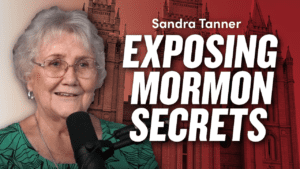Welcome to LDS Discussions, where we critically examine Mormon history, doctrine, and culture. In this episode, we dive into BYU Professor Anthony Sweat’s artwork and how it portrays controversial aspects of church history, many of which are exposed in the CES Letter by Jeremy Runnells.
Published in 2013, the CES Letter laid out major historical and doctrinal issues within Mormonism, challenging the official church narrative. Jeremy Runnells was excommunicated for his critiques, yet shortly after, in 2014, BYU Professor Anthony Sweat began painting scenes that visually acknowledged many of the same troubling topics—including Joseph Smith’s treasure digging, the use of a seer stone in translation, polygamy, and the destruction of the Nauvoo Expositor. These paintings provide a stark contrast between how members were traditionally taught about church history versus what actually happened.
We compare Sweat’s bold visual depictions with the historical concerns raised in the CES Letter, exploring how the church has attempted to subtly shift its narrative while still maintaining control over how history is presented. Some key moments include:
- Joseph Smith translating the Book of Mormon with a seer stone in a hat—a fact long denied or omitted in church artwork.
- The angel with a drawn sword pressuring Joseph Smith into polygamy, a story many faithful members struggle to reconcile.
- The destruction of the Nauvoo Expositor, revealing how polygamy played a direct role in Smith’s downfall.
- The church’s quiet revisions of historical depictions, including efforts to alter or censor artistic representations that show inconvenient truths.
We also highlight Elder Oaks and Elder Ballard’s statements on church transparency, the hidden First Vision accounts, and how church leaders have strategically controlled access to historical information. Throughout the episode, we ask: Why was Runnells excommunicated for publishing the truth, while BYU Professor Anthony Sweat’s paintings—depicting many of the same realities—are quietly accepted?
Join us as we analyze church art, historical cover-ups, and the ongoing tension between faith and historical accuracy. Subscribe to LDS Discussions for more deep dives into Mormon history, doctrine, and deconstruction.



